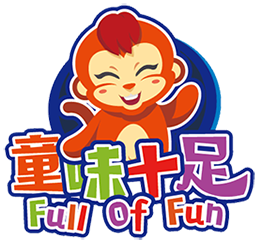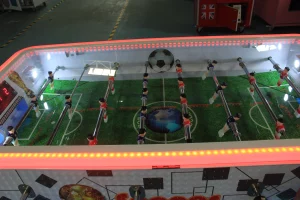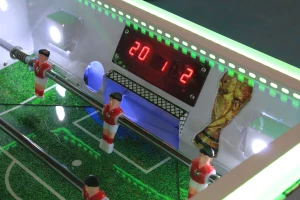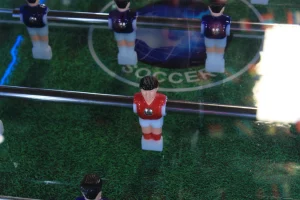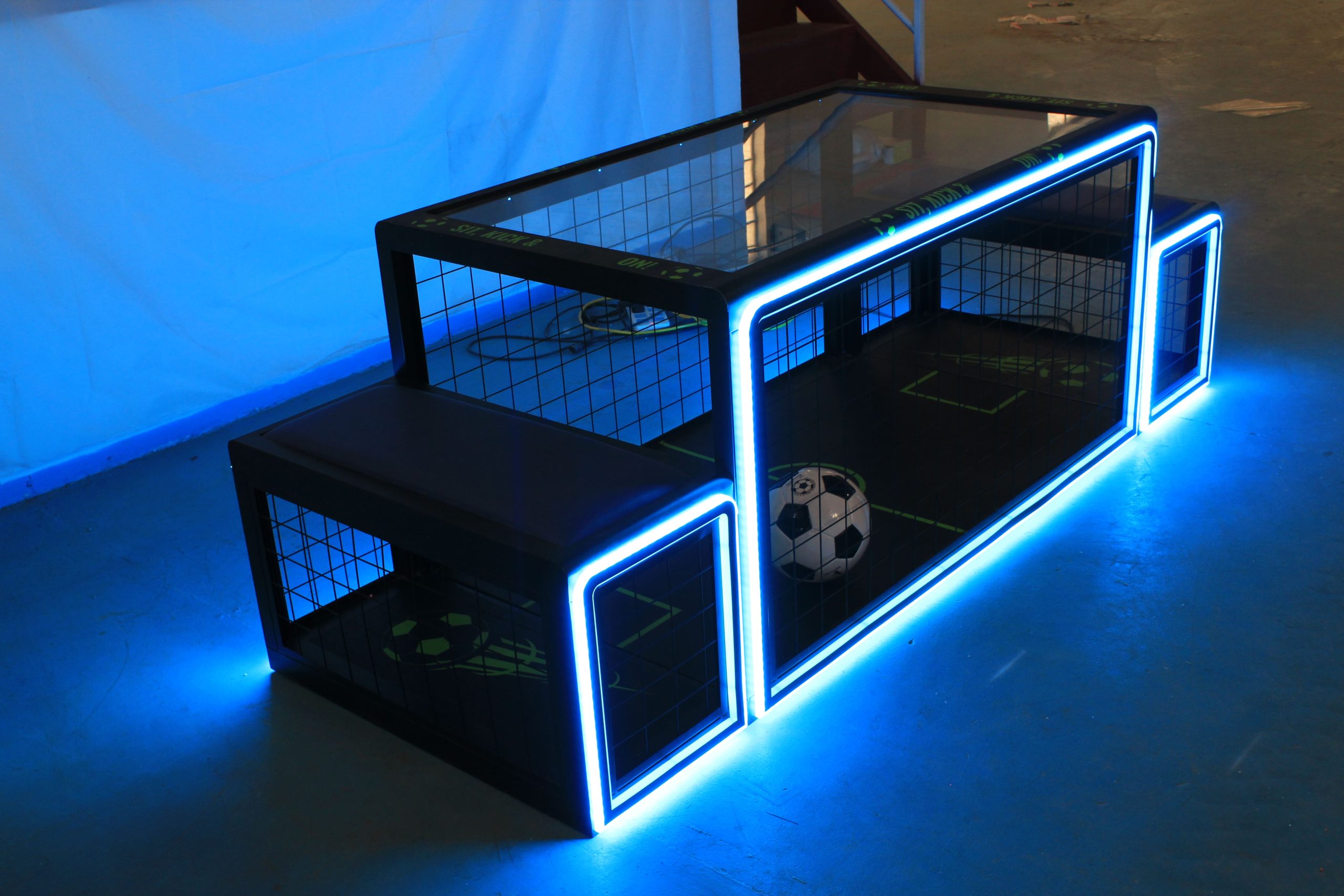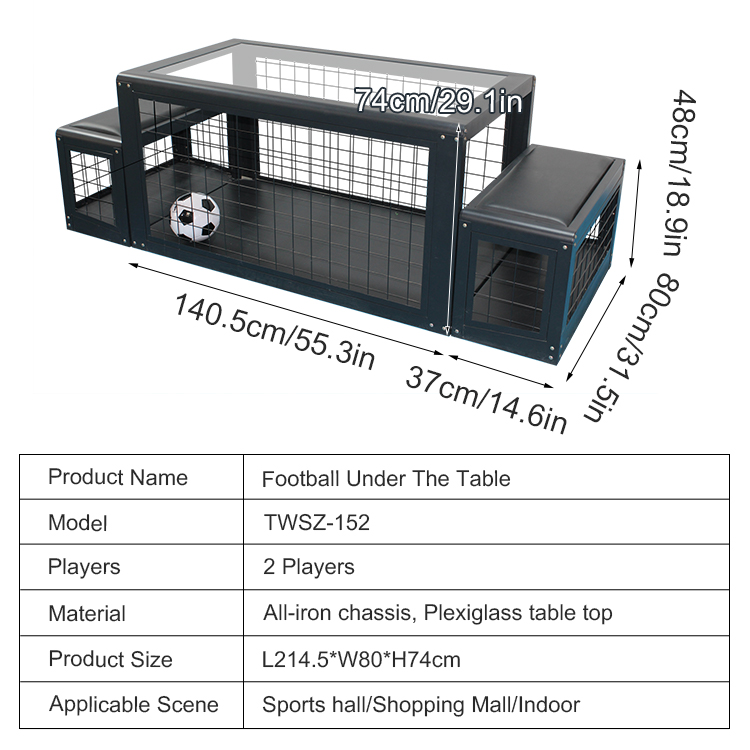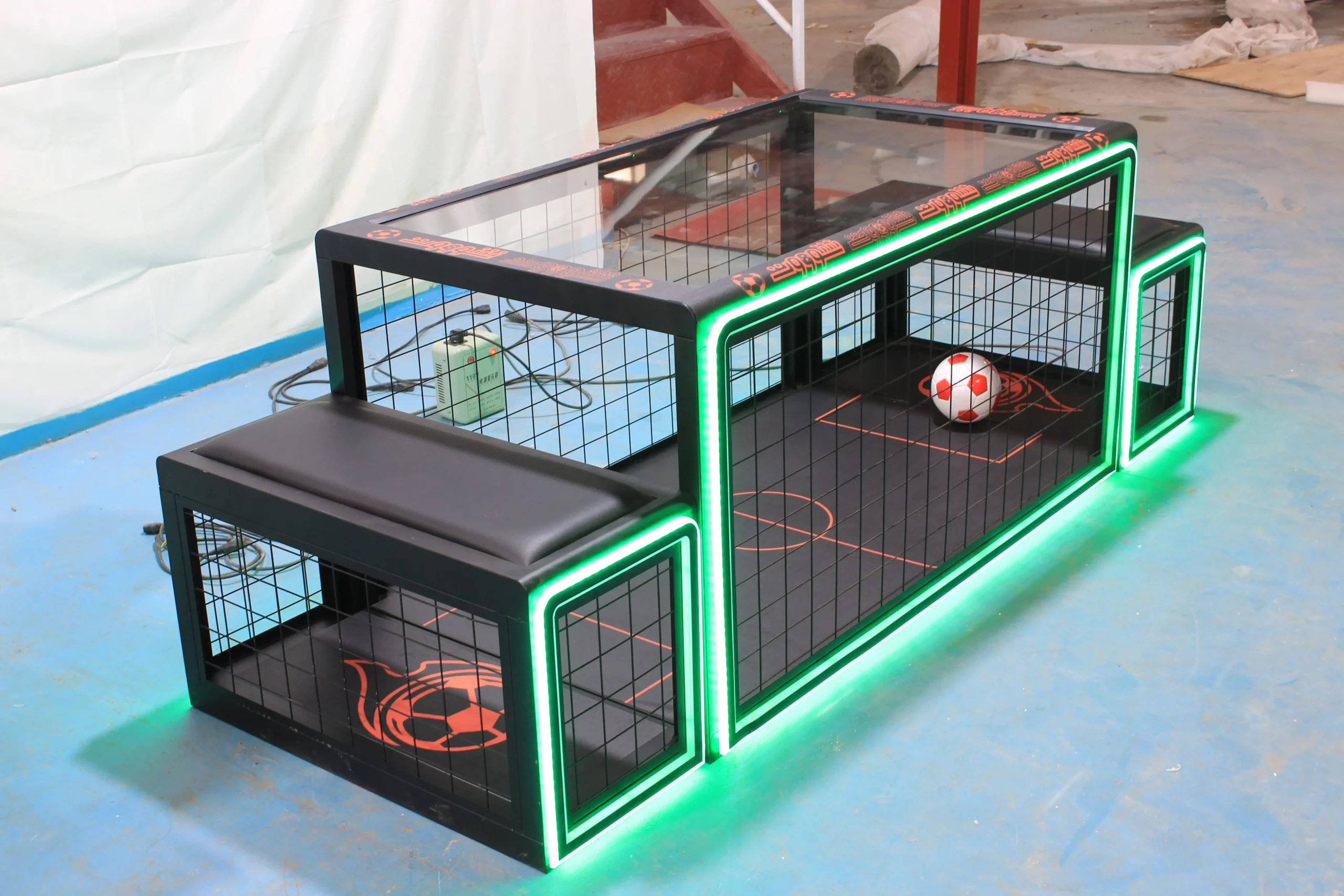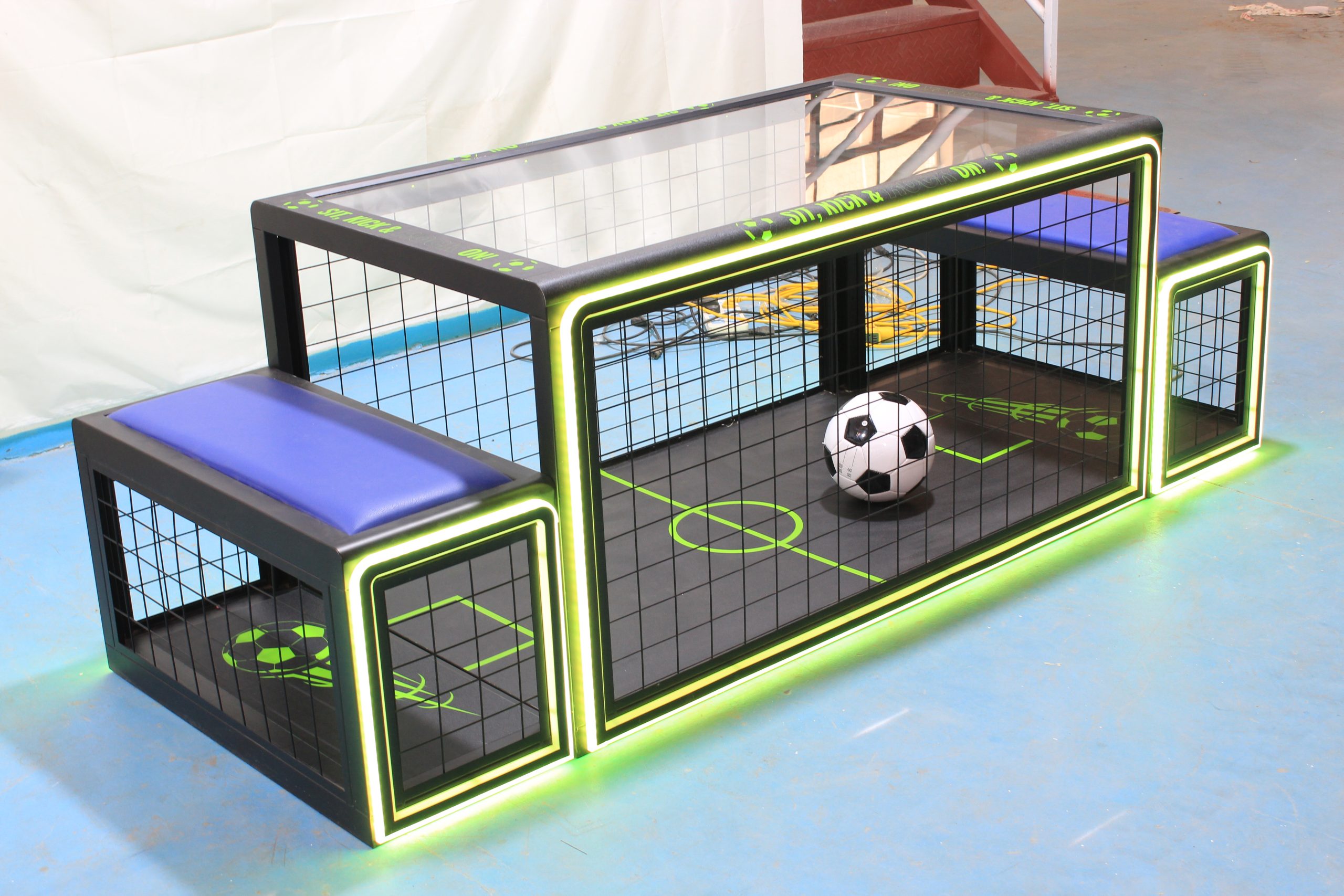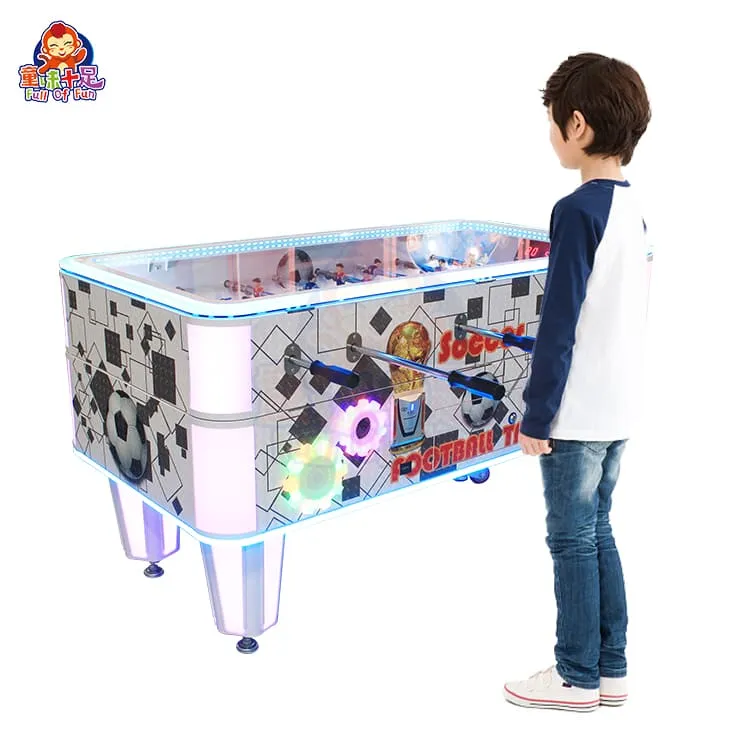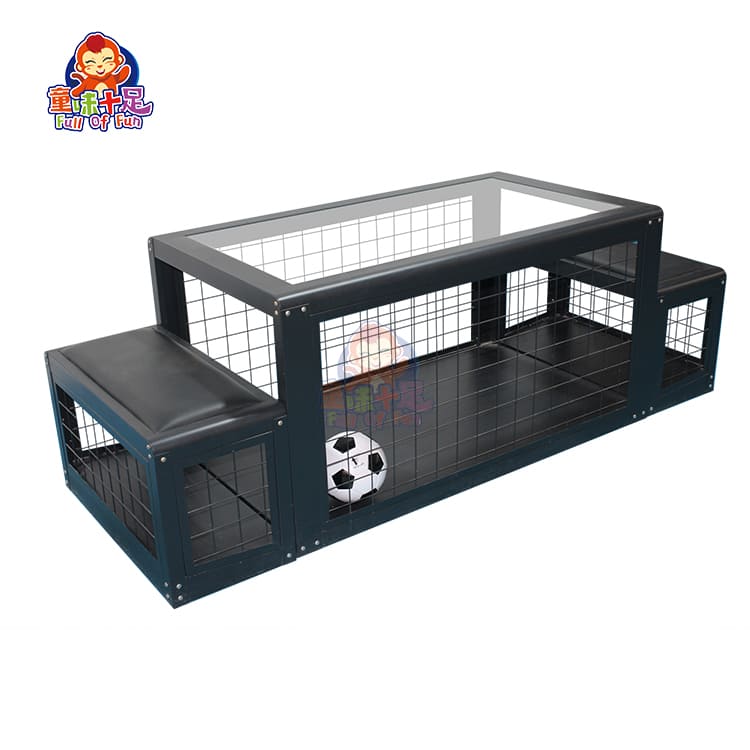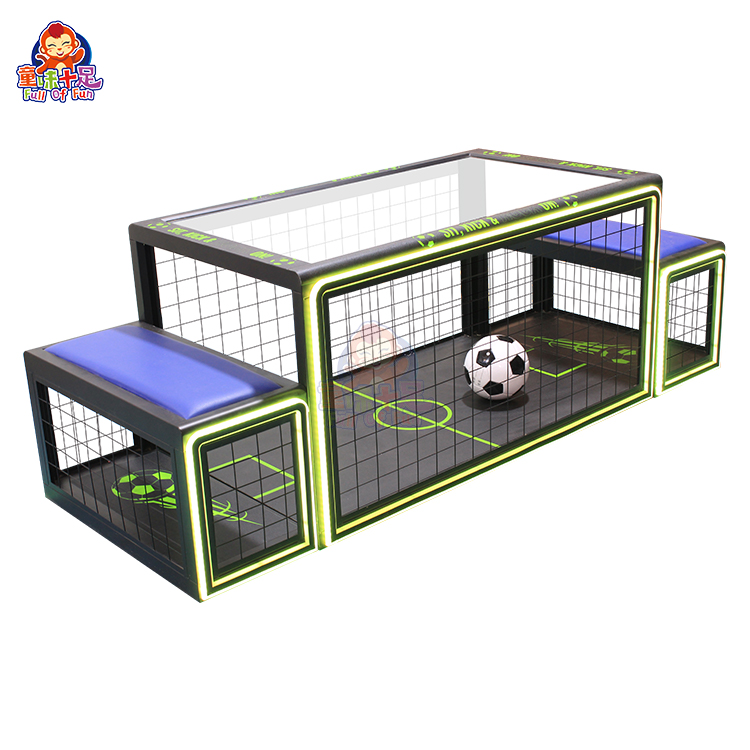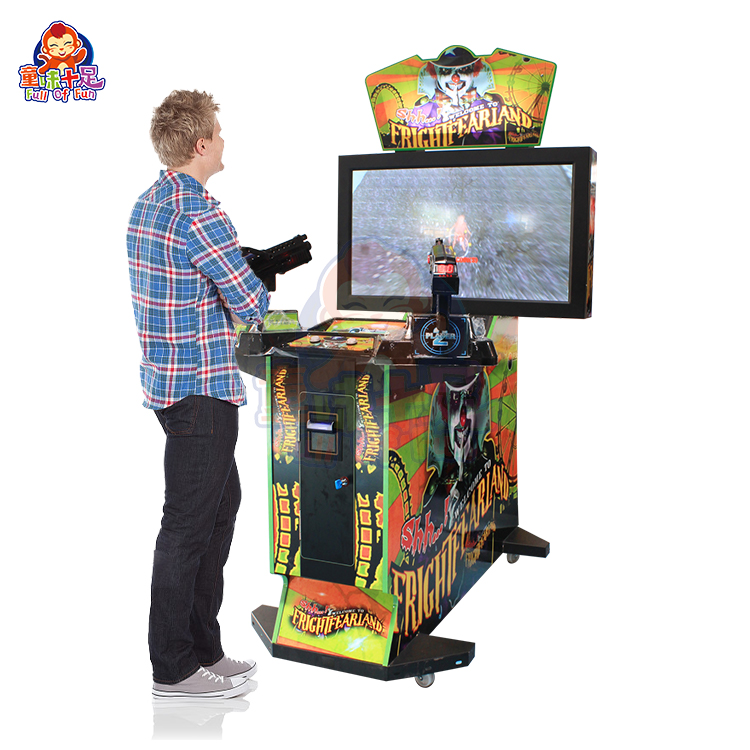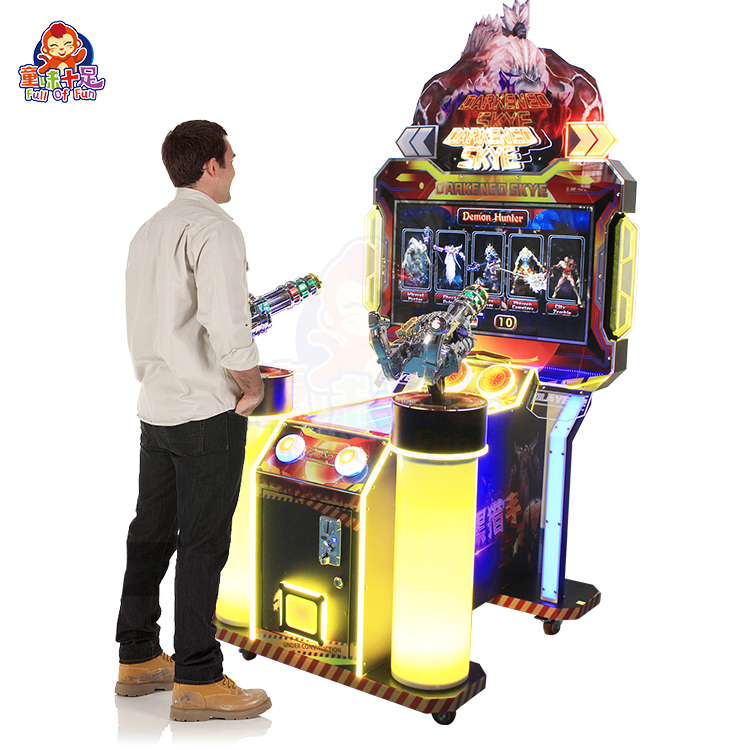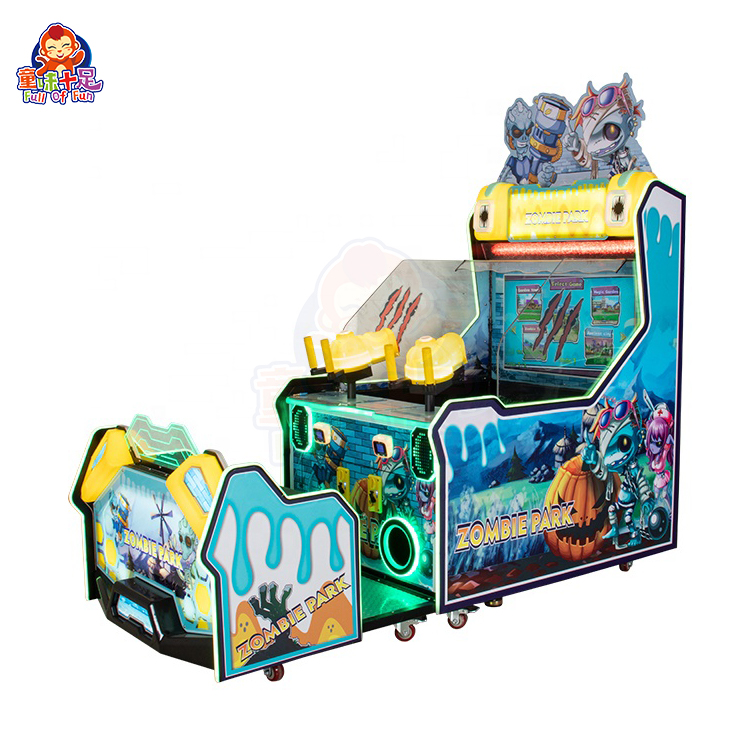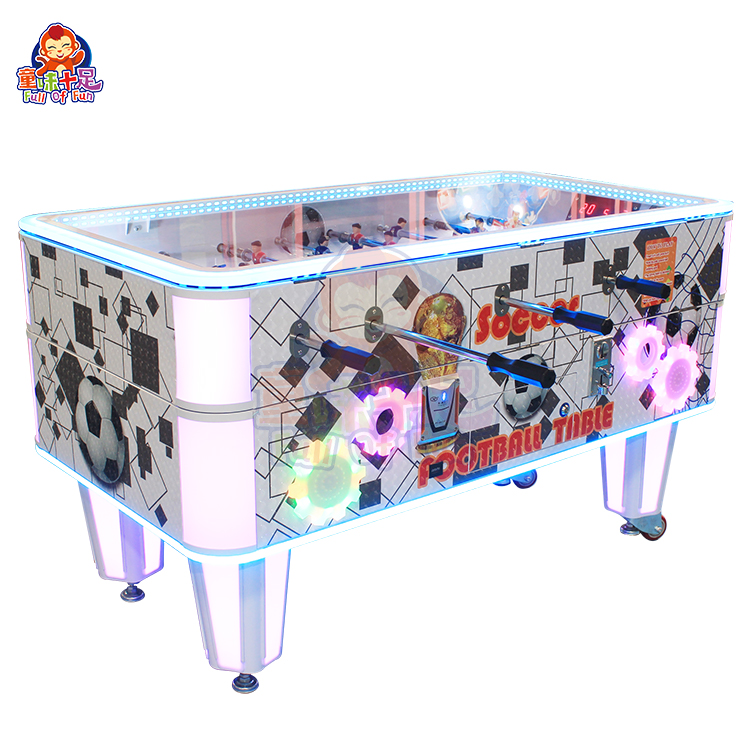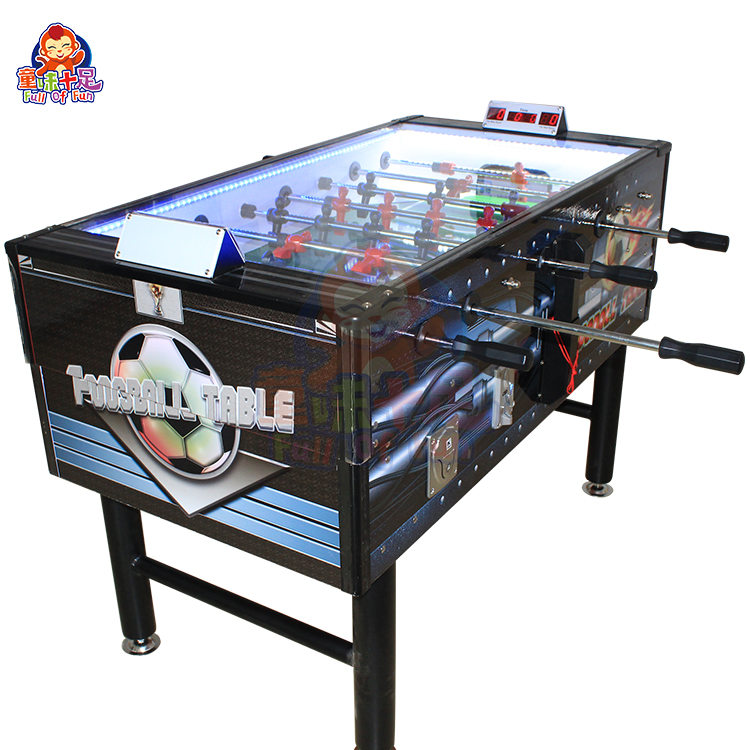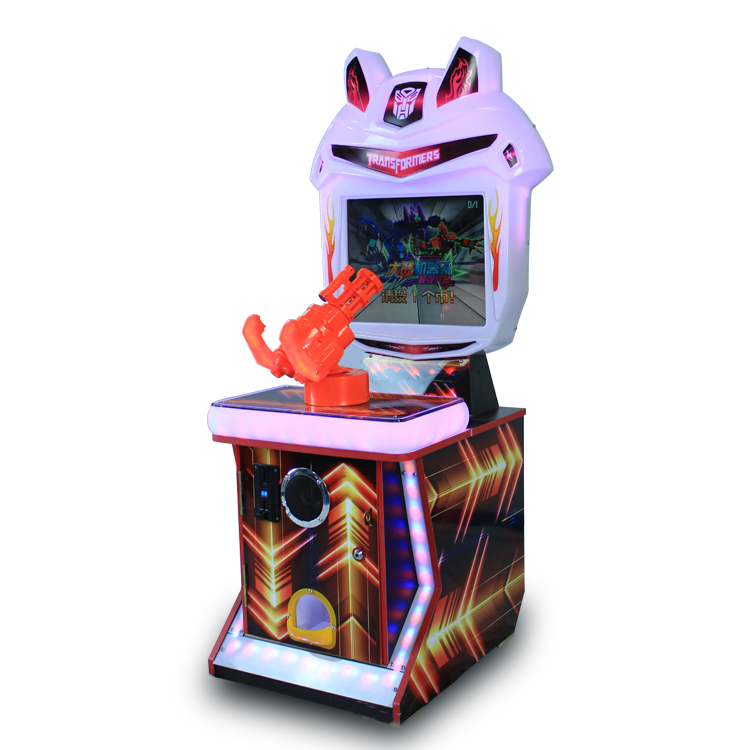Table football is a tabletop game that simulates a real soccer match. Players manipulate a small figure mounted on a pole to control the ball and attempt to score a goal. The rules are similar to traditional soccer, involving passing, shooting, and defense, but played in a smaller space and on a tabletop. Table football is both a competitive sport and a recreational activity suitable for homes, offices, and arcades.
How To Play Table Football
Table football typically requires two or four players. A standard table football game has eight control sticks, four for each team. Each team’s control sticks are arranged as follows: two in the front for shooting and defense, and two horizontally for midfield control.
During the game, players control their figures by turning and pushing the handles, performing a series of actions:
- Passing and Controlling: Midfielders are often responsible for ball control and passing. Players must keep the ball securely in their side of the court and, through continuous passing, find open spaces to create opportunities for subsequent attacks.
- Back Attack: When the ball is in their backcourt, defenders must not only defend against the opponent’s attack but also use long or quick passes to quickly drive the ball forward and initiate a counterattack.
- Penalty Shots: If the ball is stopped or in a special situation, a penalty kick may be used to restart the game. Penalty kicks require precision and suddenness, often disrupting the opponent’s defensive rhythm.
- Shooting: The forward player is crucial for scoring. Players must quickly turn the handle at the right moment to have their player strike the ball with force, accurately sending it into the opponent’s goal. This process tests both reaction speed and the coordination of angles and force.
The game is usually won by the team that reaches the set score first. Table football is more than just a simple “you attack, I defend” game; it’s more like a miniature soccer game. Players must master the rhythm of the ball, judge the defensive position, and identify offensive opportunities to excel in the fast-paced competition. It’s an exciting and fun tabletop sport that cultivates both individual skills and teamwork.
What Are The Rules Of Table Football?
- Number of Players and Division of Labor
Table football is typically played by two or four players.In two-player mode, each player operates one of the four controllers on their side. In four-player mode, two players form a team, one controlling the front court and the other the back court. - Kick-off Rules
At the start of the game, the ball is usually dropped into the center hole of the table.After the kick-off, both players can immediately use the control sticks to grab the ball.Sometimes, a coin toss is used to determine which side serves first. - Ball Control and Passing
Players control their figures by turning or pushing the handles to pass and control the ball.When passing, be careful not to intentionally hold the ball for too long or jam it, as this may result in a foul.In official matches, if the ball comes to rest between the sticks and the side wall, the defending team is usually awarded a new kick-off. - Shooting and Goals
For a goal to be scored, the ball must completely cross the goal line. The game is usually played in sets of 5 or 10 points, with the first team to reach the target score winning. - Defensive Rules
The defending team may use players to intercept, block, or steal the ball.However, the ball cannot be held in front of the goal for an extended period of time, as this may result in a penalty call. - Fouls and Prohibited Actions
Touching or moving the ball is strictly prohibited.Slamming or violently shaking the table to disrupt play is prohibited.
“360-degree continuous rotation” shots (i.e., rapidly rotating the handle more than one full circle) are generally prohibited in international competitions as they disrupt the fairness of the game. - Special Rules
Penalty Shots: If a team commits a foul during a shot, the other team may be awarded a shot from a fixed position.Dead Ball: If the ball comes to rest on the table and cannot be touched by any player, the team that served last will usually serve again.
What Are The Types Of Table Football?
- Home Table Football
Home table footballs are generally smaller, lighter, and more affordable. They are commonly used for home entertainment, leisure spaces, or small gatherings. Home tables are often made of composite panels or lightweight materials, making them suitable for beginners and children. Their advantages are small footprint and ease of movement, but their disadvantages are their lack of stability and durability compared to professional tables. - Professional/Tournament Table Football
Professional table footballs are designed to strict international standards, with dimensions, poles, and figure proportions meeting tournament standards. The table is sturdy and durable, and the poles are typically made of chrome-plated steel, offering flexible rotation and a comfortable feel. These tables are commonly found in clubs, bars, and tournaments, and are suitable for competitive players seeking a competitive experience. While relatively expensive, they offer a long lifespan. - Folding Table Football
Folding tables have become increasingly popular in recent years. They fold up when not in use, saving space and are particularly suitable for smaller homes or offices. Despite their compact size, most folding tables retain the standard layout and gameplay, making them both convenient and practical. - Mini Foosball Table
Mini tables are smaller and can be placed directly on a tabletop for play. They are commonly used as children’s toys or for office entertainment. The gameplay and rules are similar to standard tables, but the size is smaller, making them suitable for casual entertainment rather than competitive games. - Electric or Electronic Scoreboard Tables
These tables are equipped with an electronic scoreboard or LED display that automatically records scores. Some models even have lighting and sound effects to enhance the gaming atmosphere. These tables are ideal for bars, arcades, or players who prefer a more novel experience. - Outdoor Foosball Tables
Outdoor tables are made of waterproof and sun-resistant materials, such as aluminum alloy or special plastics, and can be used long-term in gardens, balconies, or outdoor areas. They are generally more durable than home tables, but they are heavier and more difficult to move.
How To Choose The Right Foosball Table
- Identify the Usage Scenario
Home Entertainment: If you only play occasionally with family and friends, choose a home-style or folding foosball table, which is smaller and doesn’t take up too much space.
Office/Party: We recommend a sturdy, mid-range table that can handle multiple players without being too expensive.
Club/Tournament: It’s best to choose a professional foosball table with a stable structure and standard dimensions, suitable for intense competition.
Outdoor Use: Choose a waterproof and sun-resistant outdoor foosball table for increased durability. - Choose Based on Budget
Entry-Level ($100-$300): Suitable for children or beginners, primarily for entertainment, with a smaller size and simpler functions.
Mid-Range ($300-$800): Features higher quality workmanship and a more stable structure, suitable for long-term use in homes and offices.
High-End/Professional ($800 and above): Built to international competition standards, with improved durability and feel, suitable for enthusiasts, clubs, or professional competitions. - Consider the table material.
Solid wood or composite wood: Sturdy, durable, and high-quality, suitable for long-term use.
Metal: Strong and wear-resistant poles, suitable for frequent competitions.
Plastic: Lightweight and easy to move, relatively affordable, but lacking stability and feel. - Consider the pole and figurine design.
Pole: Choose one that glides smoothly and rotates flexibly. Chrome-plated steel poles are most common, durable, and rust-resistant.
Figurine layout: A standard layout ensures a more realistic playing experience.
Handle design: Non-slip handles are more comfortable and suitable for extended play. - Additional features:
Scoring system: Some tables come with electronic or mechanical scorers for added convenience.
Foldable storage: For homes or offices with limited space, consider a foldable model.
Appearance: Choose from modern minimalist, vintage wood grain, or stylish lighting to suit your environment.
Why Is Table Football So Popular?
There are many reasons for its popularity. First, it’s easy to control yet versatile, making it suitable for players of all ages. Second, its fast-paced gameplay is easy to learn yet competitive, creating a sense of accomplishment and enjoyment. Finally, table football is a social activity, fostering interaction and connection at family gatherings, office leisure time, and even in arcades. Therefore, it’s not just a form of entertainment; it’s also a social activity and a light workout, beloved by players worldwide.
